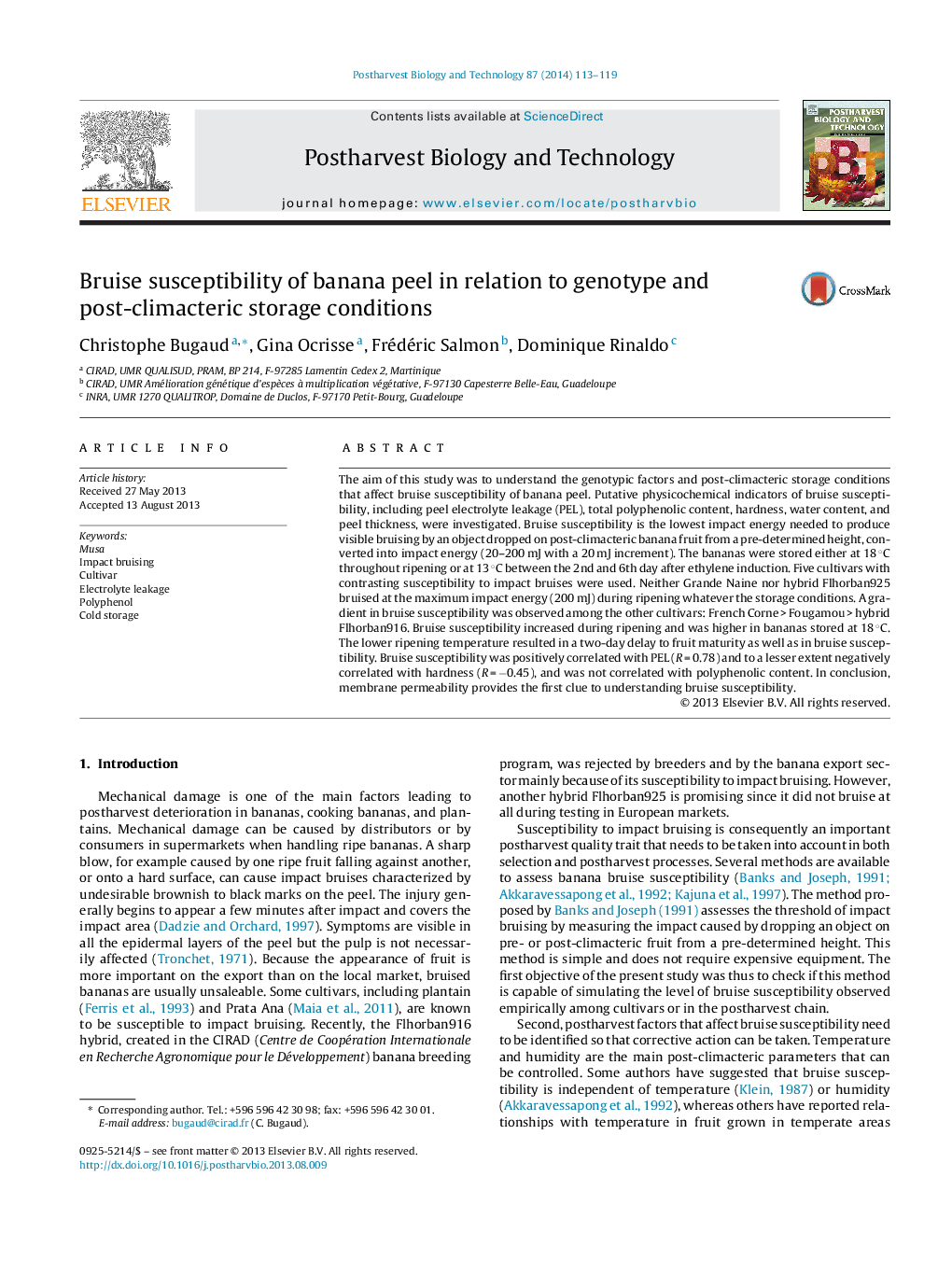| کد مقاله | کد نشریه | سال انتشار | مقاله انگلیسی | نسخه تمام متن |
|---|---|---|---|---|
| 4518336 | 1625007 | 2014 | 7 صفحه PDF | دانلود رایگان |
• Bruise susceptibility of the peel depended on the banana cultivar.
• Bruise susceptibility increased during ripening with peel electrolyte leakage.
• A decrease in temperature during ripening delayed bruise susceptibility.
• Total polyphenolic content in peel was not correlated with bruise susceptibility.
The aim of this study was to understand the genotypic factors and post-climacteric storage conditions that affect bruise susceptibility of banana peel. Putative physicochemical indicators of bruise susceptibility, including peel electrolyte leakage (PEL), total polyphenolic content, hardness, water content, and peel thickness, were investigated. Bruise susceptibility is the lowest impact energy needed to produce visible bruising by an object dropped on post-climacteric banana fruit from a pre-determined height, converted into impact energy (20–200 mJ with a 20 mJ increment). The bananas were stored either at 18 °C throughout ripening or at 13 °C between the 2nd and 6th day after ethylene induction. Five cultivars with contrasting susceptibility to impact bruises were used. Neither Grande Naine nor hybrid Flhorban925 bruised at the maximum impact energy (200 mJ) during ripening whatever the storage conditions. A gradient in bruise susceptibility was observed among the other cultivars: French Corne > Fougamou > hybrid Flhorban916. Bruise susceptibility increased during ripening and was higher in bananas stored at 18 °C. The lower ripening temperature resulted in a two-day delay to fruit maturity as well as in bruise susceptibility. Bruise susceptibility was positively correlated with PEL (R = 0.78) and to a lesser extent negatively correlated with hardness (R = −0.45), and was not correlated with polyphenolic content. In conclusion, membrane permeability provides the first clue to understanding bruise susceptibility.
Journal: Postharvest Biology and Technology - Volume 87, January 2014, Pages 113–119
